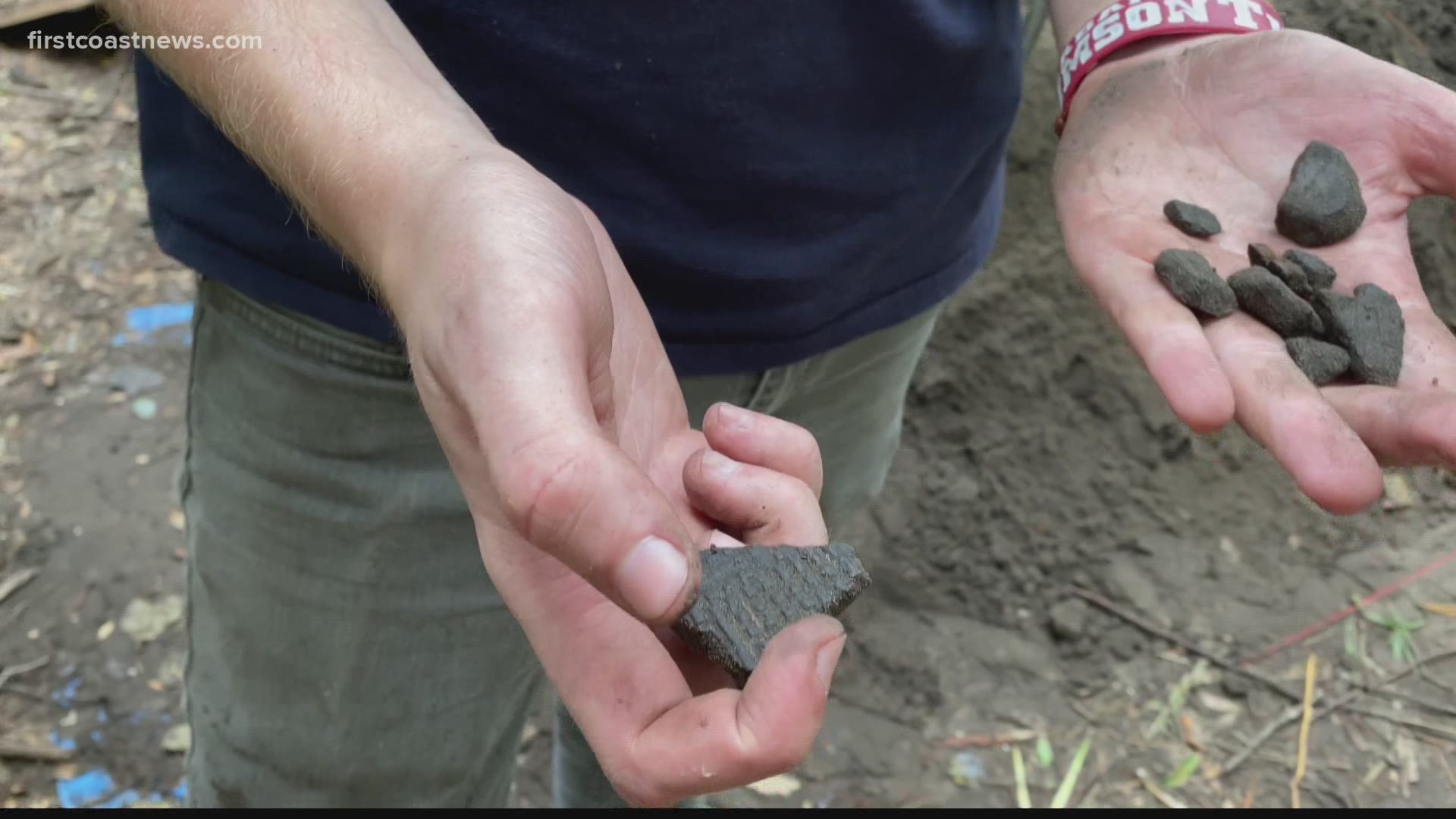JACKSONVILLE, Fla — Deep in the humid forests of Big Talbot Island, a group of students and faculty from the University of North Florida are sifting through dirt as they work to uncover the lost history of an indigenous village.
Archaeological digs like the one taking place on Big Talbot give a glimpse into the history of people, in this case the Timucua who lived along the Atlantic coast of North Florida.
While the well-known European history of places like St. Augustine and Fort Caroline draws tourists to the First Coast yearly, UNF Archaeology Lab Director Dr. Keith Ashley estimates indigenous people have called this area home on and off for the past 1,500 years.
"Everyone probably hears about the French and the Spanish and early Cowford and all those types, which are an important part of Jacksonville history," Ashley said. "But there's a history that extends back thousands of years even before that."
The area being excavated by Ashley and his team of students is believed to be the Mocama Timucua village of Sarabay, mentioned in French and Spanish texts dating back to the mid-1500s.
"Sarabay was a village that was occupied when the French arrived in 1565, and we know that it was still here when the Spanish started missionization in 1587 and probably into the early decade of the 1600s," Ashley said. "We also know that the French who were living in Fort Caroline would come to the vicinity of Sarabay to collect clay for construction. And then we hear other mentions of Sarabay, but we don't get a lot of good details."
Ashley said the main goal of the dig is two-fold: To find artifacts that would give more context to how the Mocama lived, and to map the layout of the village.
"We really want to know what a Mocama Timucua indigenous village looks like," he said. "Where are their houses, their structures? Where is their council house, the center political building?"
Since beginning the dig in August, Ashley said the group has found a number of both indigenous and European artifacts.
From arrow heads to pieces of pottery, each artifact points to different aspects of life in the area now known as Northeast Florida. And because the history of the area understood on a wider-scale is derived from European accounts, Ashley said doing the dig provides a different perspective.
"We really want to get the indigenous picture, so archaeology really helps us to really get an on-the-ground look at their way of life," he said. "And students get to, in a way, touch the past. Sometimes they're the first person to touch that artifact in 500, 1000 years. And there's a thrill for students."
While there have been indigenous artifacts discovered, including pieces of pottery dating back to the 1500s and early 1600s, Ashley said they've also found Spanish pieces.
Interestingly, the group even discovered a 4,000 year old projectile point made of chert, a material not found on the island. The artifact was likely brought to the island from inland.


Also, the discovery of animal bones and shellfish remains give researchers a better understanding of the diet of the villagers.
"I think it's great to learn about their way of life, because even though we may not share the same heritage, we're sharing the same geographic area," Ashley said. "Sometimes people think [indigenous people] were just sitting by the salt marsh fishing and that's all they really did. But we know they were involved in politics, they were involved in long distance interactions, they were involved in daily activities."

